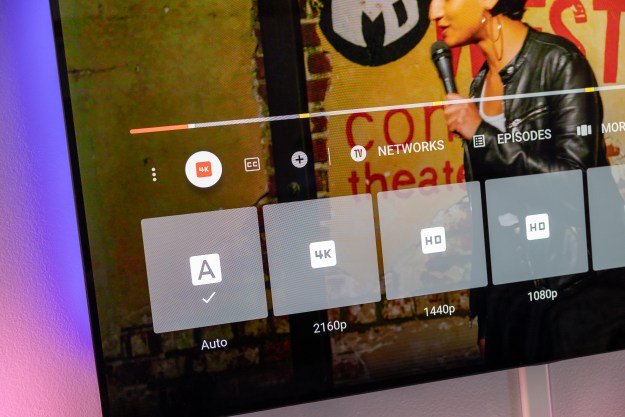When Disney was ramping up the hype machine for its Disney+ streaming service, one of the biggest benefits it touted was the availability of both Dolby Vision and Dolby Atmos on a significant chunk of its banner content. Movies like the Star Wars franchise, which would be presented in 4K HDR for the first time, and shows like the Disney+ original The Mandalorian were also supposed to get the full Dolby treatment.
And this all rings true, too, if you’re subscribed to the Disney Bundle. That’s the mechanism that gets you Disney+, ESPN+ and
But Digital Trends has discovered significant discrepancies in how Disney+ content is handled by three major platforms: Apple TV, Roku, and
The Disney+ app on Apple TV 4K presents all
Using a new Nvidia Shield TV 2019 — which includes onboard
The Roku Streaming Stick+ was the most capable of the three devices. It easily played both the Star Wars movies and The Mandalorian in
This represents a very real dilemma for audio enthusiasts who signed up for Disney+ hoping for the very best in home theater surround sound. Dolby 5.1 sounds pretty great, but if you have a Dolby Atmos-capable sound system at home, you deserve to hear what the format can do to bring episodes IV-VI of the Star Wars saga to life in a whole new way.
We’re a bit stumped as to why this is happening at all. The Disney+ support page on the topic suggests that if your device can handle
Disney+ offers a growing library of content in 5.1 Surround Sound and
Dolby Atmos . Supported audio formats for a given title can be found in the DETAILS section under each title. Disney+ will automatically use the highest-quality audio your system can support.
We know that Netflix places severe limitations on which streaming devices get
Responding to our request for a comment on this situation, a source at Disney+ did not corroborate our experiences but did tell us that the service is working with its device partners to enable
Updated at 6:43 PM PT with a response from Disney+
Editors' Recommendations
- What we want to see from the next Apple TV 4K
- What is Disney Plus: plans, price, and everything else you should know
- The ultimate guide to Dolby Atmos: what it is and how to get the best possible sound
- What is Apple TV+? Pricing, features, how to get it, and more
- Which streaming platform has the best screensavers?




